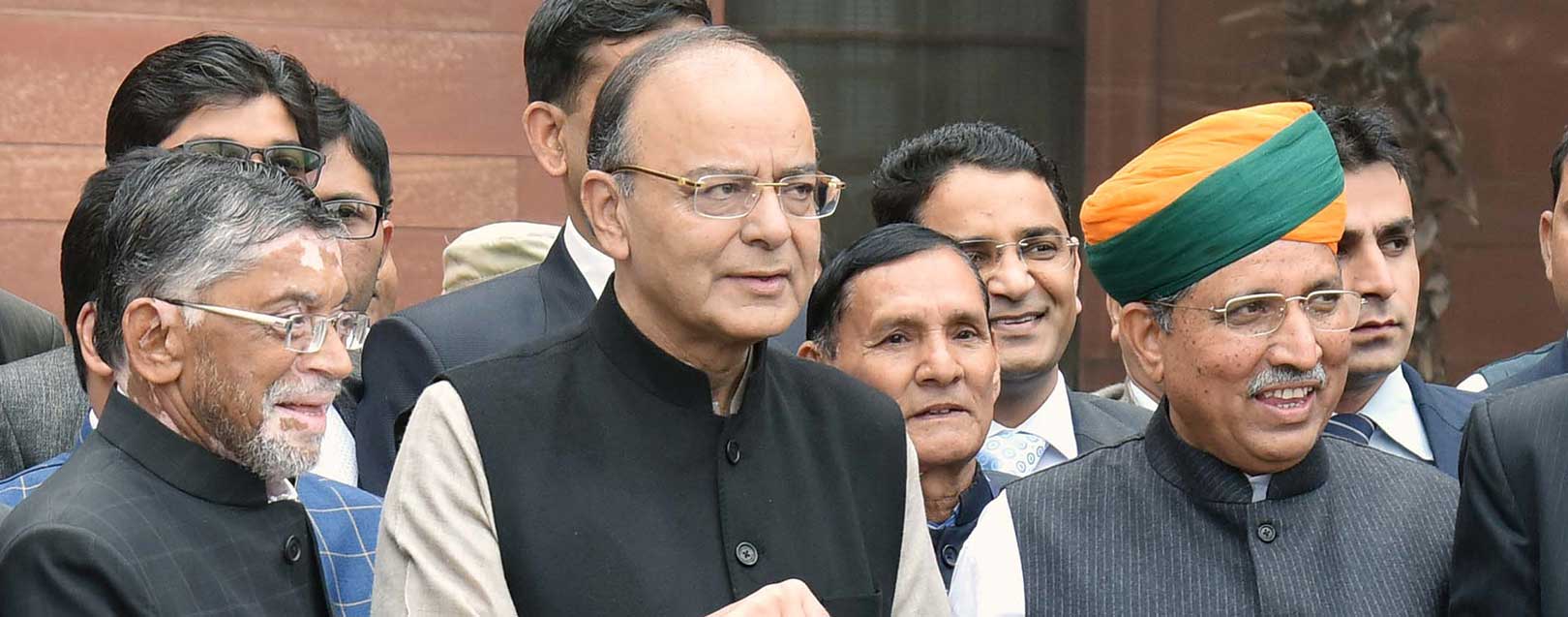
Industry welcomes government push to infrastructure developments and inclusive growth
The Dollar Business Bureau
With stepping up capital expenditure, proposing a better synergy among railways, roads, waterways and civil aviation, and putting a sharp focus on rural infrastructure development and with many more announcements in the Union Budget 2017, the government has reiterated its commitment to economic growth and development. These moves have been welcomed by business and trade associations.
“The government has provided a balanced and growth-oriented budget. The tax benefits to small taxpayers, MSMEs and Infra status to affordable housing are encouraging and would pave the way for a higher growth trajectory in the coming times,” says Gopal Jiwarajka, President, PHD Chamber of Commerce and Industry.
Another key takeaway from this year’s budget is the government’s renewed focus on agriculture. The government has set the target for agricultural credit in FY2018 at a record level of Rs.10 lakh crore.
“We will take special efforts to ensure adequate flow of credit to the under serviced areas, the eastern states and Jammu & Kashmir. The farmers will also benefit from 60-day-interest waiver announced by the Prime Minister in respect of their loans from the cooperative credit structure,” Finance Minister Arun Jaitley’s statement in the budget speech has been hailed by the experts.
“The focus given to agriculture in the budget is very encouraging in terms of an overall positive impact on the industries linked to the sector,” says Sudha Pillai, Former Member Secretary, Planning Commission.
Listing of public sector enterprises is another noteworthy move, feels Jiwarajka. “It will improve corporate governance and the efficiency of the public sector,” he says.
Pillai feels that the focus on agriculture in the budget is very encouraging and it will have an overall positive impact on the industries linked to the sector,” says Pillai. “Having said this, more could have done for the public sector followed by health insurance. After agriculture, mining and fisheries are areas that should be strengthened by the government and private players,” says Pillai.
This year’s budget also lays emphasis on improving tax to GDP ratio. According to Jaitley, India’s tax to GDP ratio is very low, and certain data proves that the direct tax collection is not proportionate with the income and consumption trend. He then went on to specify some statistics to buttress his claim, “As against estimated 4.2 crore persons engaged in organised sector employment, the number of individuals filing return for salary income are only 1.74 crore. As against 5.6 crore informal sector individual enterprises and firms doing small business in India, the number of returns filed by this category are only 1.81 crore. Out of the 13.94 lakh companies registered in India up to 31st March, 2014, 5.97 lakh companies have filed their returns for Assessment Year 2016-17.”
And to address that, he has proposed a slew measures such as reduction of the existing rate of taxation for individual assesses between income of Rs. 2.5 lakh to Rs. 5 lakh to 5% from the present rate of 10%.
And, the experts have welcomes those moves. “The budget has given us reasons to expect a good Tax-GDP ratio in the coming months,” says Rajeev Talwar, Vice President, PHD Chamber.
It’s also a welcome move from the government to increase the allocation for capital expenditure by 25.4% over the previous year. In addition, following the FRBM Review Committee, the government has pegged the fiscal deficit for 2017-18 at 3.2% of GDP and wishes to achieve 3% in the following year.
Talwar also welcomed the government intention to address the political funding. “We can also need to look at the European economy as far as the public funding for politics is concerned,” says he.
The industry experts have also welcomed various proposals announced in the Union Budget to facilitate transport infrastructure development. The Budget has proposed a railway outlay at Rs.1.31 lakh crore. Railway will also set up -end-to-end transport solution for some commodities. Allocation to road infrastructure development has also been increased to Rs.64000 crore in FY2018. The government is also planning to set up multi-modal logistics park.
While speaking with The Dollar Business in the morning, Atul Kumar, Former Chief General, NHAI, said,” We need fund for national highways expansion and expect the Finance Minister to make some announcements in this regard. NHAI also needs more funds for land acquisition.” It seems that Arun Jaitley heard his appeal.
“Infrastructure has got a good boost with the huge allocation given to the roads and railways,” says Pillai.
While commenting on the budget, Praveenshankar Pandya, Chairman, Gem & Jewellery Export Promotion Council (GJEPC) says,” A new and restructured central scheme, namely, Trade Infrastructure for Export Scheme (TIES) will be launched in 2017-18. We await the finer details of the same. We require investment in infrastructure like jewellery parks all over India to enhance and transform India’s exports of gems and jewellery because of the uncertainty over oil prices and the software IT sector.”
While applauding government’s commitment to create an eco-system to make India a global hub for electronics manufacturing he says that the same needs to be done in the case of gem and jewellery sector. “Government has to encourage international trading, and makes India a global trading hub for diamonds and precious stones to give a boost to local manufacturing,” says Pandya.
Jaitley has also proposed to reduce the income tax for smaller companies with annual turnover up to Rs. 50 crore to 25%. The cut in corporate tax rates for MSMEs based on turnover is a good move. “This will benefit a large number of gems and jewellery exporters from MSME category,” feels Pandya.
However, Ajay Dua, Former Secretary, DIPP, Ministry of Commerce and Industry says, “There is disappointment with respect to the corporate tax which continues to stand at 30%. The finance minister had earlier promised to reduce it to 25%.”
“It was the right time to incentivise the corporates but the FM doesn't seem to have considered it. However, the budget allocation to the infrastructure is a good indicator for employment generation,” says Anil Khaitan, Senior Vice President - PHD Chamber.





 to success.
to success.